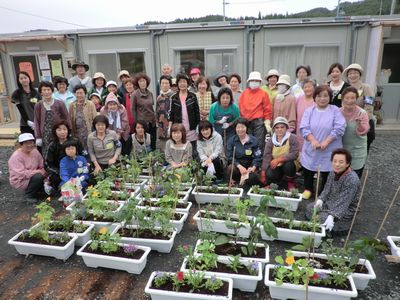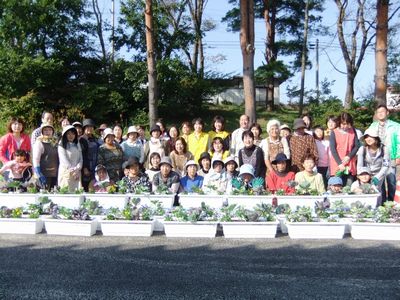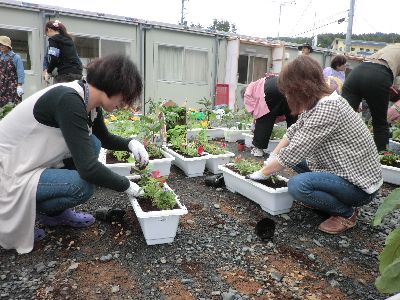Yoga teaches us to take whatever circumstances or challenges we face in life, and create something beautiful. With the recovery process from “Superstorm Sandy” here in the USA well upon us, I was inspired to share my experience of how yoga students in the Tsunami areas have been coping with loss and making a difference in their communities, so torn apart by what occurred not so long ago. While teaching yoga in Iwate prefecture in Japan, I had the chance to connect with yoga students who lived in areas like Sendai which were utterly devasted by the 2011 Tsunami.
So many people were affected by the tragedy last year. An attendee from the workshop came up to us at the end of class with a picture book on the tsunami. She showed us a picture of her town in the book before the tsunami and pointed out her house in the picture. She turned the page and there was a picture the same land, utterly in rubble. She showed us the empty hole and debris that was once her home.

She explained how she was safe inland, but when the tsunami came her mother and grandmother were at the house and got separated in the maelstrom. Rescuers found her grandmother barely breathing and she died outside of a hospital that was too full to accept her. They have yet to find her mother. She is using yoga to help make sense of what has occurred.
Since the tsunami, countless people who have lost their homes have been living in sterile, pre-fab housing that resembles storage units set in concrete parking lots, without trees, grass, flowers, devoid of nature or aesthetics. These people not only lost property, but they lost family members, friends, and any sense of normalcy. Needless to say, incidence of clinical depression in these housing units is high.
A small percentage of the homes lost were traditional Japanese structures that were loved and passed through generations for over 400 years. These were more than just houses; they were treasured landmarks that represented the history and tradition of an entire culture.
What made these homes even more distinct were the thatched roofs that grew wild grasses and flowers. Not only were they beautiful, these roofs held the significance of architecture that co-existed with nature through hundreds of years (its origin could trace back even thousands of years), and were deeply revered by their owners, as well as all of Japan.
During the workshop we met a yoga student named Ayako Shida who, inspired by her archival research on these 400 year old “living” homes, had started purchasing potted flowers from disaster area nurseries to help stimulate the local economy. Since the Tsunami she has been organizing volunteer crews to plant these flowers easonally at the temporary housing units for people who lost their homes. She calls it the Hanasaki Project, literally meaning “the Flower Blooming Project”.
She wanted to do something to improve the living conditions, to brighten the mood, and to help the residents with emotional healing by letting them know that people cared. A few of the yoga teachers we work with in Tokyo have organized fundraiser classes as well to keep this work alive, as there is no telling when they will be able to settle into to real homes again. We were so moved by her cause that we pledged the workshop proceeds to the project.
Sometimes all it takes to rekindle hope is to know that someone out there cares and to spread a little beauty.
If you are looking for a way to help the recovery efforts from Hurricane Sandy here are just a few of the organizations and businesses who my New Jersey and New York friends have recommended as making the most out of donations and volunteer efforts. Please donate!
Help the Cinnamon Snail Food Truck Serve Vegan Meals For Sandy Relief

